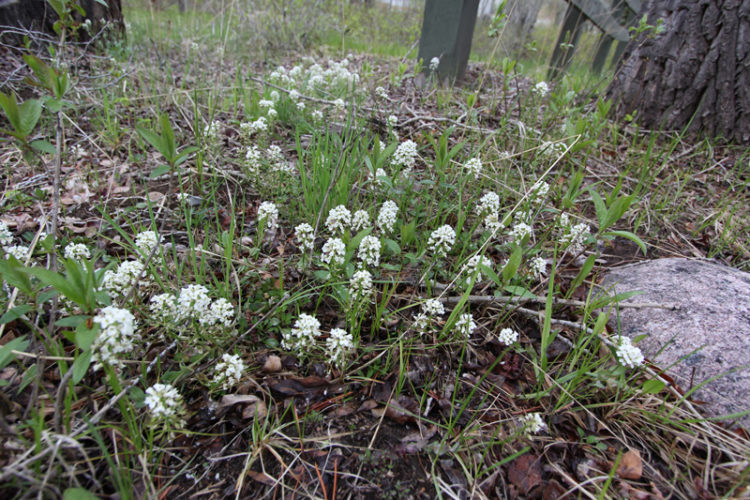
I am occasionally guilty of paging through plant books to find humorous epithets for my better half. For example, he has been called “bristly hawksbeard,” “spiny cocklebur,” “Western sticktight,” and “Mexican sprangletop.”
Today, however, he took a page out of my book and called me his “candytuft.” Normally I might not be so happy about the use of a mustard moniker as a term of endearment. After all, mustards are often pungent, bitter, or spicy. But the small white flowers of candytuft, known also as Fendler’s pennycress, are a nice amount of sweet—just like me!
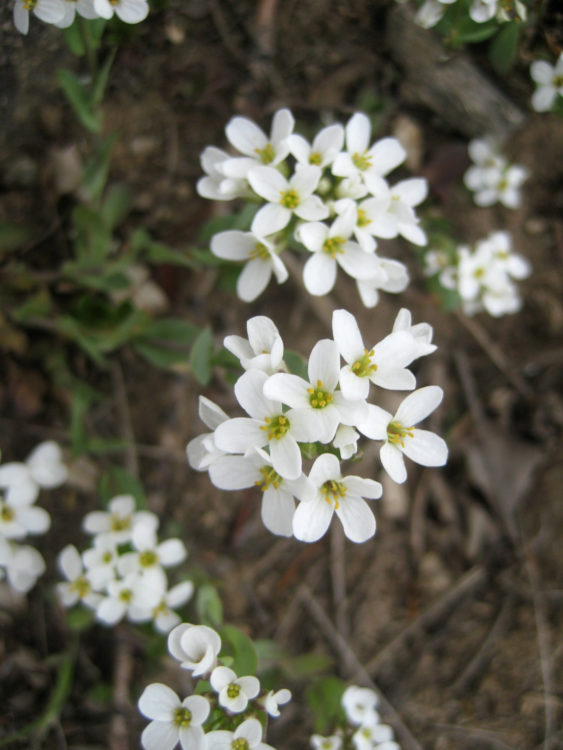
Candytuft grows throughout the western United States including Texas. It is a low plant that tends to grow in homogenous groups. Thus while inconspicuous when solitary, a patch of candytuft can be spotted from afar due to so many low, white-flowering heads.
Like all Mustard family plants, candytuft flowers are four-petaled and borne in clusters in a squirrel tail or raceme form, with the small flowers on thin stemlets that alternate around the central stem like a bottlebrush. Later, the flowers become flat, almost spoon-shaped seedpods with a thin, narrow structure sticking out the end of each one.
Earlier in the season, candytuft starts in a flat rosette of gray-green leaves that may have a purplish cast if the weather’s been cold, Cattail Bob Seebeck writes (Survival Plants, 2012). One or more flower stems emerge from the rosette. The stem leaves alternate around the stem. They are dime to penny-sized, pointed-oval or ovate in shape with smooth margins, and they clasp the stem at their bases. The flower stems may lie prostrate, giving the appearance of a flattish starburst with the rosette at the center. The flowers themselves are often white but can range to light purple.
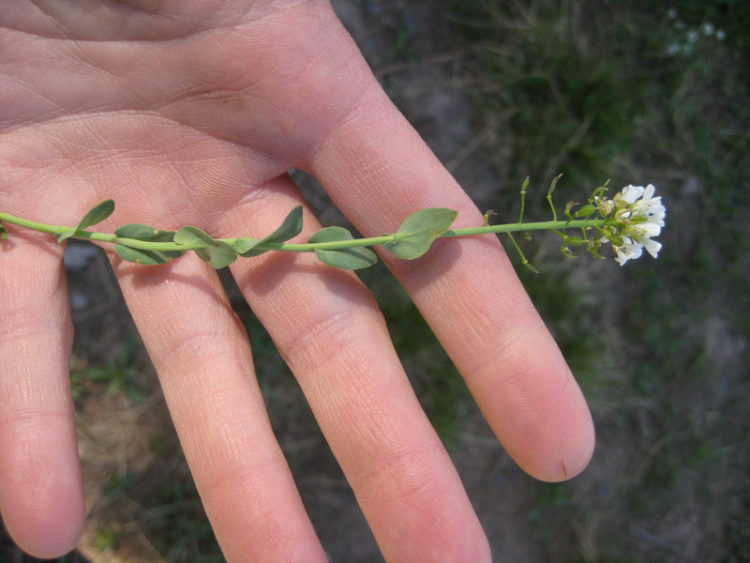
Seebeck describes the flavor of candytuft as mustard-like, and says it’s hardly worth the effort to gather and eat due to the plant’s small size. This is why I generally go for the flowers, which are surprising in their mildly sweet flavor. These work well in a salad if you can get them home or into the salad bowl before the petals fall off.
Candytuft is a native perennial that is found from 5,000 feet to 13,000 feet, but is most common in the mountains. The currently accepted binomial is Noccaea fendleri, although it has gone by many other names, including Thlaspi montanum and Thlaspi alpestre.
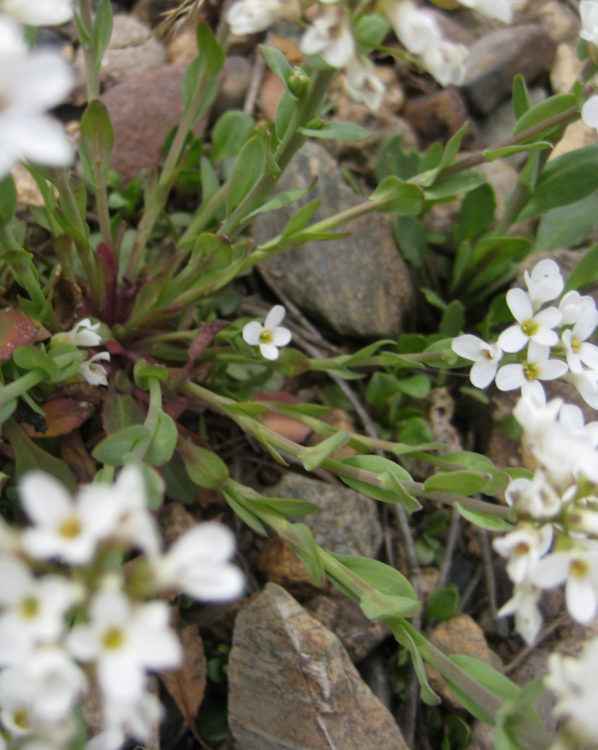
There are several subspecies of candytuft. The one found in southwestern Colorado is Noccaea fendleri subsp. glauca, according to Al Schneider at swcoloradowildflowers.com. “Candytuft often begins flowering when only one inch tall and the flower stalk elongates and continues to produce flowers as the plant matures,” he writes. “You see it all spring and summer as it follows you in flower from low canyons and foothills early in the spring to high mountains and tundra all summer.”
Species of alpine pennycress that are currently in, or formerly of, the genus Thlaspi tend to be talented hyperaccumulators of heavy metals. Therefore they are good candidates for environmental remediation. For foragers, this means you should not gather and eat candytuft or its relatives if you find them growing on the tailings pile from a mine, or in wet soil downstream from one.
A good guideline to follow for sustainable foraging is to spread out your harvest and pick only a small percentage of plants (in this case, like 25%) from healthy patches (of like 20+ individuals).
Toss the pretty, sweet flowers heads into a salad and serve it to your loved one saying, “This is for you, my little candytuft.”
Updated 2.22.21
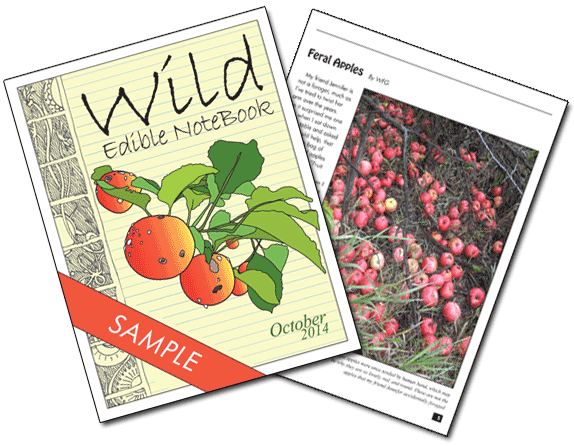
I am an old lady…81…born in Oklahoma, have lived in New Mexico, Texas, California, and Arkansas. Ate wild sour dock as a child…didn’t know it needed cooking. Just loved the taste of it.
Hi Rebecca, I don’t think dock needs to be cooked. I just like it that way!